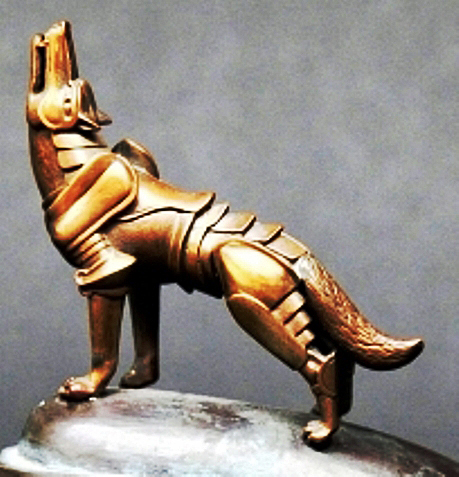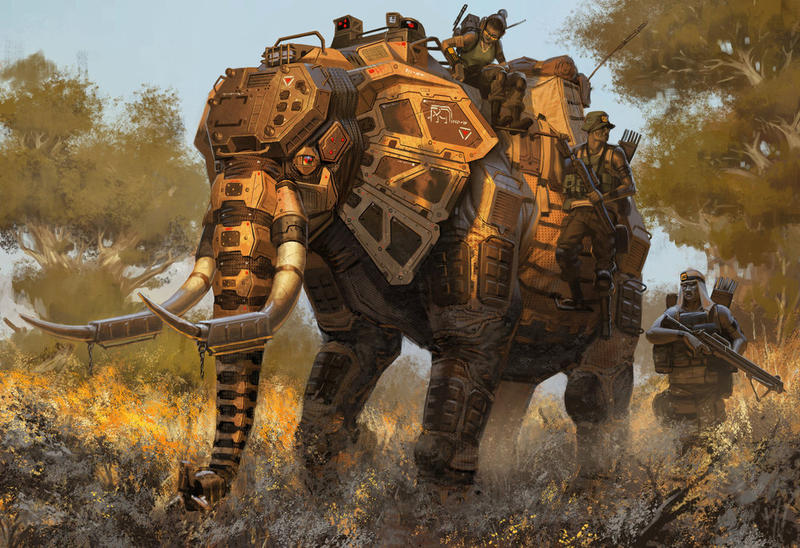Let me try to sketch out your line of reasoning. You claimed that the crisis of the third century inaugurated a period of fiscal problems for the Roman Empire that forced the Emperors to make cuts in Rome's hitherto-vast establishment of a combined-arms military, making it leaner and relying instead on a rapid-response force of heavy cavalry that could perform the mission done by the larger armies at a lower cost. This rapid-response force, you argue, was first established by the Emperor Gallienus, and other military leaders continued to draw on that basic example for the succeeding millennium. Thus the superiority of cavalry over infantry in medieval Europe. Once European rulers became wealthy again, in the Renaissance, you believe that they were once again able to create infantry units capable of standing up to cavalry. Hygro added to this explanation by describing medieval western Europe as possessing a decreasingly monetized economy characterized by hoarding and an increasing willingness to base economic transactions off of direct connections to whatever was done with a particular parcel of land.
In reality, late Roman history didn't work that way. The narrative of the so-called crisis of the third century has fallen out of fashion now, but even if one does agree that the third century involved a fair amount of political and military turmoil for Rome that doesn't mean that those effects
continued. Gallienus did establish that cavalry unit at Mediolanum, true enough (although one might quibble about calling it a "reserve", etc.), but in the long run that unit
didn't matter. The Illyrian Emperors and the Tetrarchs had no use for it, and why should they have? The Empire that they ran was more powerful than it had been at any point since Trajan, with full coffers, political stability, and a vast military establishment. Fourth-century Rome was prosperous in almost every sense of the word. Gallienus' cavalry unit
ceased to exist within a few years of his death and played no role in an Empire that relied once again on hundreds of thousands of soldiers arrayed in a combined-arms force. The Romans of the fourth century didn't just have
cavalry in their reserve forces: they built entire field armies of
comitatenses and
palatini, with all sorts of infantry and cavalry.
Yes, Rome eventually "fell", and few would dispute that a Great Simplification took place in Western European socioeconomic life over the following centuries. Coinage wasn't as stable or as widely used as a medium of exchange as it had once been. The rulers of medieval Western Europe undoubtedly had less money to throw around than the Romans had. Under those circumstances, though, why would anybody bother with cavalry? It'd be absurd: cavalry have always been
fabulously expensive compared to infantry. Horsemen require much, much more training. The horses require care, feeding, shelter, shoeing, and so on. Since each horseman requires remounts in order to be at all useful, the amount of wealth necessary to sustain his military vocation increases exponentially. If
tighter money were the chief driving factor, here, wouldn't we see a
decline in European cavalry establishments?
Furthermore, I would dispute that the medieval era
was a time during which cavalry reigned supreme
to an extent that was unusual compared to the rest of history. Small numbers of trained medieval horsemen were often able to scatter larger forces of untrained infantry, but you see similar stories throughout history, not just in the medieval era. Formed infantry - and dismounted cavalry (!) - also won plenty of fights against forces chiefly comprised of cavalry during the period in question. Tours and Legnano were only the most famous such engagements.
You claimed that the late Roman and medieval European periods were marked by combat consisting primarily of sieges and raids rather than set-piece field battles,
as opposed to history before and since. Again, I don't think that such an assertion is borne out by the facts. Battle has
always been a lottery, and generals in every era of history have preferred to seek alternatives rather than resort too easily to rolling the iron dice. In fact, it's very easy to argue that the medieval era in western Europe, especially the sixth, seventh, eighth, ninth, and tenth centuries, probably saw
more pitched battles because sieges and raids were pointless: there were few cities or towns with appreciable amounts of wealth. Population centers were few and far between, coinage was scarce, and the overwhelming majority of the people were subsistence farmers. Most of the wealth in a realm would be tied up in a king's army and in the belongings of the people that followed that army. Battle would be the only way to get at that wealth.
But let's say for the sake of argument that medieval European warfare
did mostly consist of sieges and raids. Wouldn't that increase the value of infantry
relative to cavalry? Infantry are much, much more useful in siege actions. They can man defenses, tunnel, and sap. They don't possess large quantities of horse that need to be groomed, fed, and maintained during the siege.
To sum up: I think that the explanation you put forward is more or less true in one important respect. Rome did maintain a humongous well-trained army, and after Rome was gone nobody in Western Europe could dream of having such a force for centuries. This was undoubtedly due in no small part to the Great Simplification (a
post-Roman development, not a development of the third century). Rulers lacked the money and the population and the institutions and the authority to amass large, well-trained military forces on the same scale as Rome. (This should be glaringly obvious to everyone except Bernard Bachrach.) Wealth was therefore not a
cause of the changed military situation, but rather the two things were symptoms of something else. I also do not believe that there was some sort of sea change in the way cavalry and infantry worked relative to each other in Western Europe during this time period.






